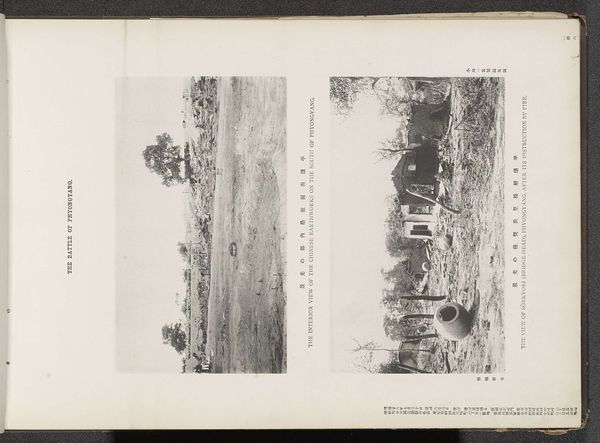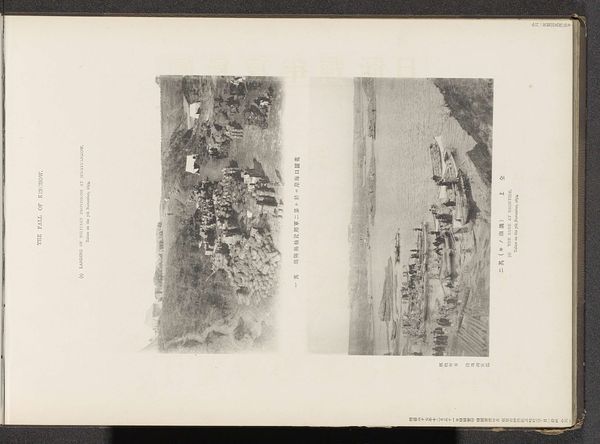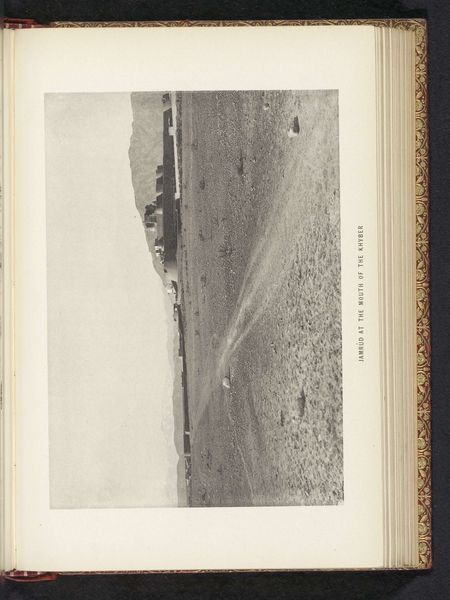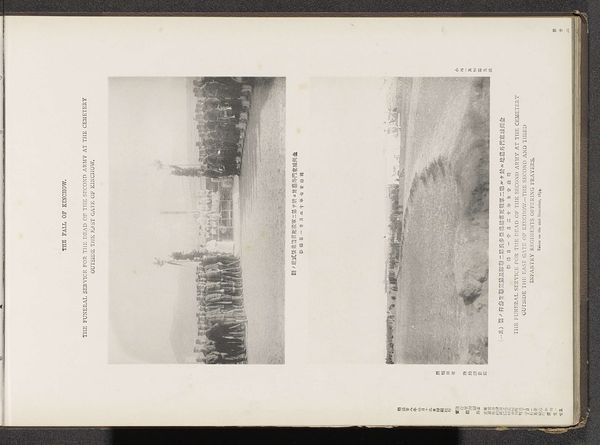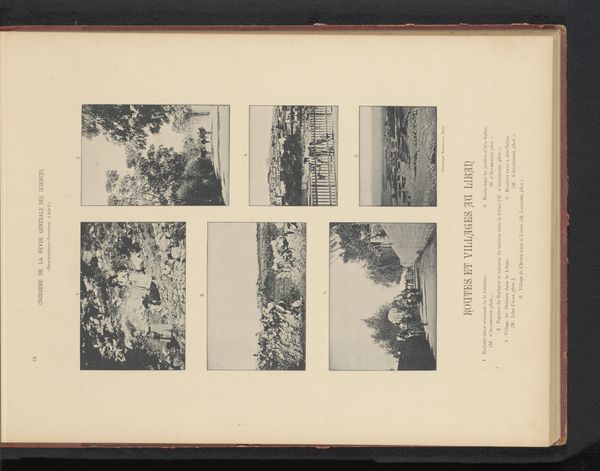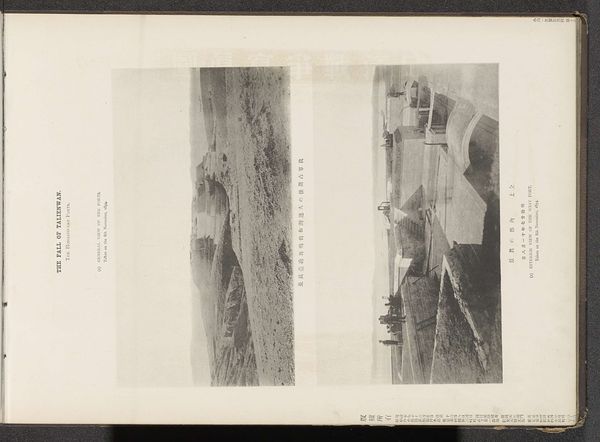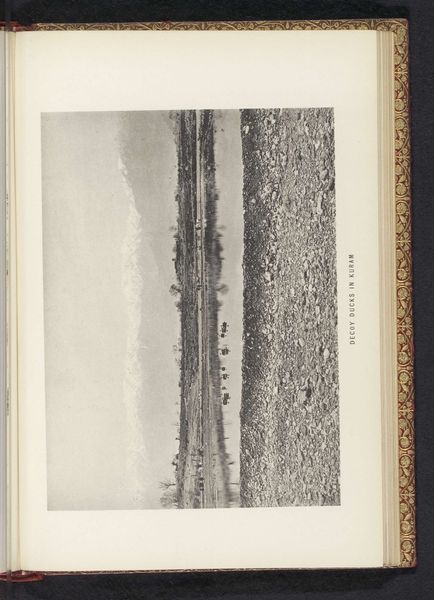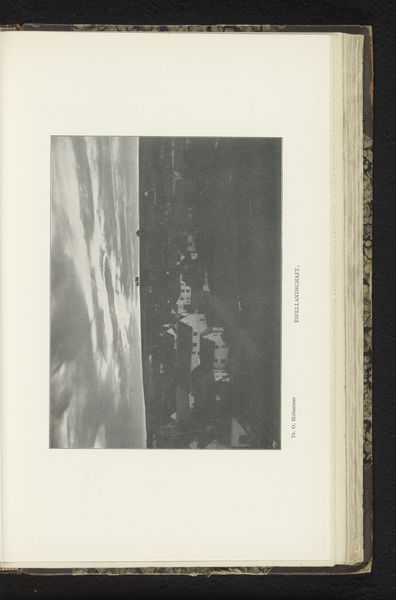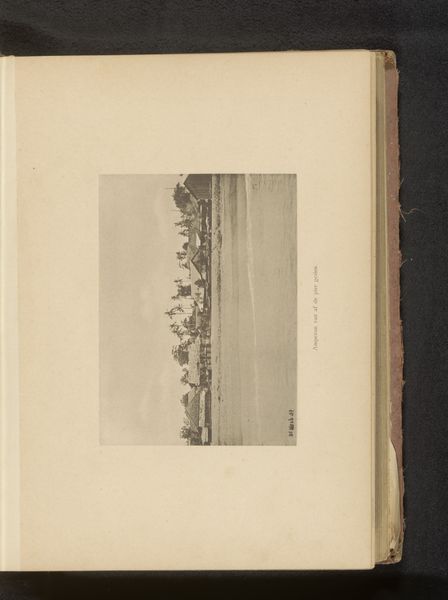
print, photography
#
ink paper printed
# print
#
asian-art
#
landscape
#
photography
#
realism
Dimensions: height 426 mm, width 195 mm
Copyright: Rijks Museum: Open Domain
Curator: Looking at this compelling printed image, titled "Twee afbeeldingen van (vermoedelijk) Mantsjoerije"—"Two images of (presumably) Manchuria"—made before 1895 by the Ordnance Survey Office, I'm struck by the austere documentation of a land far removed. What springs to your mind? Editor: Woah. I'm getting an instant historical wave from the muted monochrome and the sheer flatness. The left side has these oddly geometric fields and in contrast, on the right a swarm of activity: tents, people, animals...like peering into another century through a sepia dream. Curator: Indeed. The left photograph meticulously captures the terraced agricultural landscape. Notice the systematic and regimented layout of these fields, potentially revealing land management techniques adopted for resource efficiency in the region. The photograph on the right, by contrast, showcases a bustling settlement – a vivid depiction of Manchuria during that era. Editor: What hits me, looking closer, is the scale and intimacy captured here; all that work is recorded, but you don't actually see people working it. With that sense of industry in that little settlement, it’s bustling—maybe even overwhelming. It begs the question, who documented this and why? Were they surveying the land or life itself, what part did these photos play in making sense of this land? Curator: That's precisely where the socio-political dimension comes into play. Being from the Ordnance Survey Office suggests this work was most likely produced for strategic, potentially colonial or military surveying purposes. Visual documentation held significant value to European powers in understanding landscapes, populations, and their resource distribution. It visually encodes political intent. Editor: Interesting... it's fascinating how seemingly neutral depictions of land transform under such a lens. Suddenly it's more than earth and tents—but an atlas of power plays—this also makes you consider who is omitted and who gets included, especially knowing of colonialism’s heavy editing. Still, I find something profoundly melancholic in that older aesthetic. It captures a world in a way we can't any longer replicate. Curator: It indeed provokes reflections about time, power, and our continued reliance on imagery for constructing narratives. Editor: Definitely food for thought. You see maps; I see ghosts and calculations, don't think I can look at a photograph quite the same again.
Comments
No comments
Be the first to comment and join the conversation on the ultimate creative platform.
